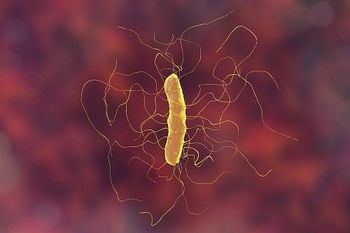
Gut Microbiota and Consequences of Gut Microbiota Disruption
Dr. Tom Lodise provides an overview of gut microbiota and the consequences of dysbiosis.
Episodes in this series

Paul Feuerstadt, MD: We’re going to shift gears a little bit and talk about overall treatment of Clostridioides difficile. It’s important to remember that 2 things must happen for an individual to get C diff: You have to be exposed, and you have to have a state called dysbiosis. We’ve thrown the dysbiosis term around a bit, but Tom, can you walk us through what the microbiota is, what it’s made of, and what dysbiosis means?
Thomas Lodise, PharmD, PhD: Sure, Paul. The question is, where do I start? The gut microbiome, I think, is the thing that really describes it best; it really is the forgotten organ. We think about it like it’s this complex ecosystem, comprising not millions, or billions, but over a hundred trillion organisms and their genetic content. The diverse organism within the micro ecosystem is called the microbiota. It includes bacteria, viruses, phages, fungi, and other single-cell organisms. Most research today has involved bacterial microbiota, given their predominance relative to other microbes. It’s estimated [that] there’s over a thousand different bacteria residing within a healthy gut. Most of them are in the lumen of the large intestine. When we think about the different bacteria, we look at the fila, we have Firmicutes, Bacteroidetes, Actinobacteria, and Proteobacteria. These 4 comprise 99% of the intestinal microbiota in healthy adult individuals. We think about the 2 most predominant ones when we talk about a healthy gut: We’re talking about Firmicutes and Bacteroidetes. In a setting of healthy homeostasis or eubiosis, the gut has an array of functions, aids in digestion, metabolism, and immune modulation, among other factors. I kind of think about its two primary functions. It offers both protective effect and metabolic function. It presents colonization resistance from C diff infection and other resistant pathogens, and ensures immune modulation of both the innate and adaptive immunity, so that balance of pro- and anti-inflammatory mediators ensures good gut integrity. We think about metabolic functions, bio acid homeostasis—we have learned a lot about that in recent years, in how the gut plays a major role in ensuring that. Short-chain fatty acid production as well as vitamin synthesis, the B vitamins as well as vitamin K. Really the opposite of that, when you have this disruption of the hemostatic state, it’s called dysbiosis. At dysbiosis we have an alteration in the composition in order functions of the microbiome. Everybody’s microbiome is different; it’s almost like a fingerprint. What we typically see is change in the abundance of healthy bacteria relative to the less healthy microbe. In a setting of dysbiosis, we have an increased abundance of E. coli Klebsiella, the proteus bacteria relative to Firmicutes and Bacteroidetes. When we think about precipitating factors, genetic defects, all the risk factors that I discussed before, stress diets, it all goes back to diet, alcohol consumption, infection, and clearly [the] use of antibiotics. When we think about dysbiosis, why it’s so concerning, is that I think we take our forgotten organ, the microbiome, for granted.¼With dysbiosis, we have infections like C diff, but the consequences of dysbiosis really extend beyond infection. You have immune-mediated autoimmune disease. It’s being linked to Type 1 diabetes, metabolic cardiovascular disorder Type 2 diabetes, obesity, colorectal cancer, certain neuropsychiatric conditions like Parkinson disease, infection conditions like I mentioned, and there’s even some suggestion there’s a link to kidney disease. When it’s working well, it is the forgotten organ. It’s only in that setting at dysbiosis that we really get concerned about it.
Paul Feuerstadt, MD: I think you did a really nice job kind of covering the microbiome, which is the genetic complement; the microbiota, which are the various living species; dysbiosis, which is an alteration from normal; and then that ever-important piece that you alluded to also, which is the metabolome. We care what’s in the microbiota, but we care more metabolically what the microbiota is producing. That’s again another piece of this area that we’re just starting to dig deeper into and we’re starting to understand.
Transcript edited for clarity
Newsletter
Stay ahead of emerging infectious disease threats with expert insights and breaking research. Subscribe now to get updates delivered straight to your inbox.

























































































































































































































































































